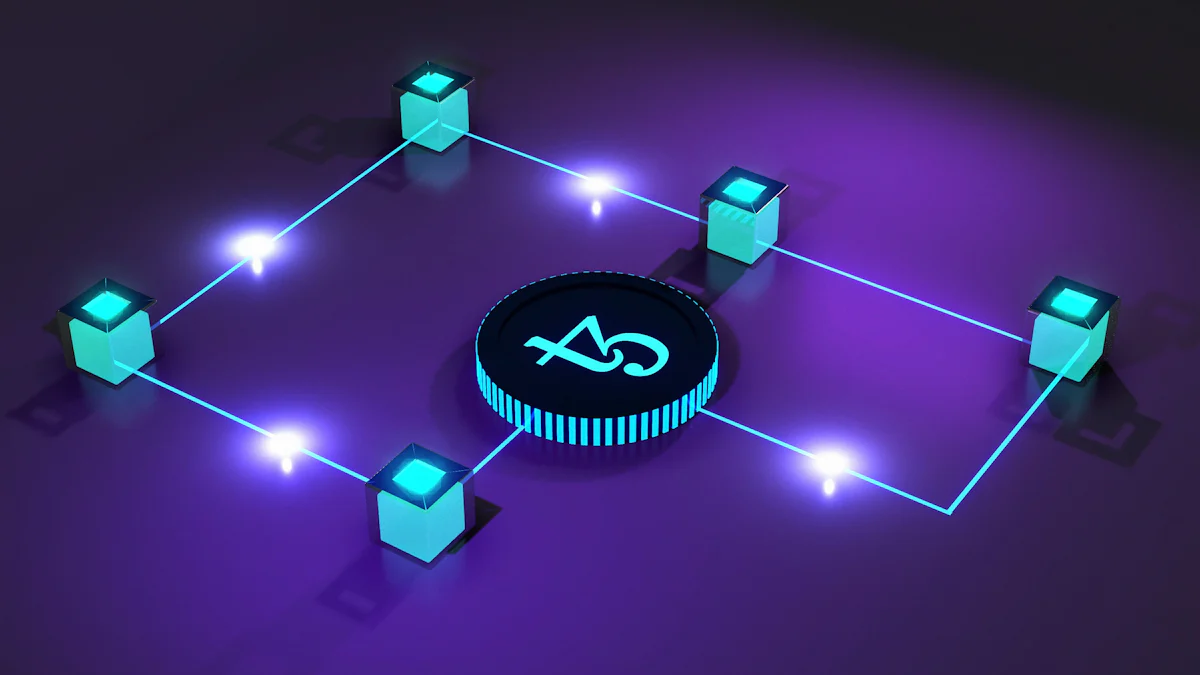Understanding Blockchain Risk: A Comprehensive Guide

Blockchain Risk Overview
Blockchain technology has ushered in a new era of digital transactions, but it also brings inherent risks that must be carefully considered. Anyone involved in blockchain must grasp the potential threats and vulnerabilities associated with this technology. Understanding these risks is imperative for safely navigating the world of blockchain transactions. The implications of blockchain risks can significantly impact both organizations and individuals, making it crucial to have a comprehensive understanding of the potential threats posed by this innovative technology.
Foundations of Blockchain
What is Blockchain Technology?
At its core, blockchain technology is a decentralized system that serves as a digital ledger, recording transactions across numerous computers. This distributed ledger technology ensures transparency, security, and immutability of data by maintaining a continuously growing list of records, or blocks. Each block contains a cryptographic hash of the previous block, creating a chain-like structure that provides a secure and tamper-evident record of transactions. The utilization of consensus mechanisms further reinforces the integrity of the blockchain, ensuring that all participants agree on the validity of transactions. Additionally, smart contracts, which are self-executing contracts with the terms directly written into code, play an essential role in automating and enforcing agreements within blockchain operations.
Key Components of Blockchain
The key components of blockchain technology include blocks, chains, and cryptographic hash functions. Blocks contain transactional data and are linked together in chronological order to form a chain. Cryptographic hash functions are used to secure the data within each block by generating unique identifiers for the information stored. Furthermore, consensus mechanisms such as proof of work or proof of stake enable agreement among network participants regarding the validity of transactions. Smart contracts are another critical component that facilitate automated execution and enforcement of contractual agreements within blockchain networks.
Exploring Blockchain Risks
Potential Risks Associated with Blockchain Technology
While blockchain technology offers numerous benefits, it also introduces certain risks that must be carefully considered. One of the most significant threats is the potential for a 51% attack, which has the capability to disrupt the integrity of blockchain networks and compromise transactions. This type of attack occurs when a single entity or group gains control of more than half of a network's mining power, enabling them to manipulate transaction history and double-spend coins.
In addition to the threat of a 51% attack, operational risks within blockchain processes pose another set of challenges. These operational risks encompass system failures, human errors, and inadequate security measures. System failures can lead to transactional errors and data discrepancies, while human errors may result in incorrect inputs or mishandling of sensitive information. Furthermore, inadequate security measures can leave blockchain networks vulnerable to unauthorized access and data breaches.
Understanding these potential risks associated with blockchain technology is crucial for organizations and individuals involved in cryptocurrency transactions. By recognizing these vulnerabilities, proactive measures can be implemented to mitigate the impact of these risks and ensure the continued integrity and security of digital ledger systems.
Impact of Blockchain Risks
Real Threat of Exchange Hacks
The real threat of exchange hacks looms large over the cryptocurrency landscape, posing a significant risk to the security and stability of blockchain transactions. Cryptocurrency exchange security is paramount in safeguarding digital asset security against potential breaches and unauthorized access. Understanding the impact of exchange hacks is essential for implementing effective security measures that can mitigate these risks.
Vulnerabilities in cryptocurrency exchanges can lead to substantial financial losses for individuals and organizations.
The decentralized and pseudonymous nature of blockchain transactions makes it challenging to recover lost or stolen assets in the event of an exchange hack.
Heightened awareness and proactive measures are necessary to fortify cryptocurrency exchange security against potential threats and vulnerabilities.
Mitigating Blockchain Risks
Implementing robust security protocols and risk management strategies is crucial for mitigating blockchain risks. Regulatory compliance and adherence to industry best practices play a vital role in managing these risks effectively. By prioritizing cybersecurity measures, organizations can enhance their resilience against potential threats, thereby fostering trust and stability within the blockchain ecosystem.
Ensuring comprehensive oversight and continuous improvement of security frameworks are imperative for addressing evolving challenges in blockchain risk management. Proactive monitoring, incident response planning, and regular assessments contribute to a proactive approach in mitigating potential risks associated with blockchain technology.
Managing Blockchain Risk
Risk Management Strategies
Effective management of blockchain risk requires proactive measures to assess and monitor potential vulnerabilities. By conducting regular risk assessments and continuously monitoring blockchain processes, organizations can identify and address operational, system, and process risks. Implementing contingency plans and disaster recovery protocols is crucial for mitigating potential disruptions in blockchain operations. These strategies enable organizations to respond promptly to unforeseen events, minimizing the impact of any adverse incidents on the integrity and security of blockchain transactions.
Educating Stakeholders on Blockchain Risks
Vital to building a resilient ecosystem is the education of stakeholders about the inherent risks associated with blockchain technology. By raising awareness about operational, system, and process risks, stakeholders can be empowered to recognize potential vulnerabilities and contribute to a culture of risk awareness and mitigation. Promoting a proactive approach to risk management fosters an environment where all participants understand their roles in safeguarding the integrity of blockchain transactions.
Understanding Blockchain Risk
Blockchain risk is an inherent aspect of the technology and necessitates proactive management and mitigation strategies. Educating stakeholders and implementing robust security measures are crucial for effectively navigating the challenges associated with blockchain risk. A comprehensive understanding of these risks is vital for fostering trust and stability in the cryptocurrency ecosystem.
